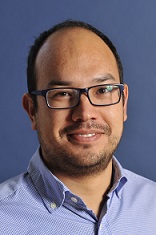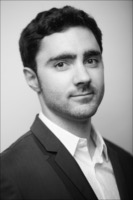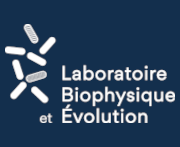[( Philippe Nghe Associate professor (Maître...
Philippe Nghe

Associate professor (Maître de conférence HDR), director of LBE
Born in Dijon (France), Philippe studied at Ecole Polytechnique (Palaiseau), before doing his master in hydrodynamics and soft matter physics at Université Pierre et Marie Curie (now Sorbonne Université). He did a PhD at ESPCI Paris in close collaboration with industry on the flow of complex fluids in microfluidic geometries. During his postdoc, he moved to the Netherlands to study evolution in gene networks and noise in growth in bacteria in AMOLF. He started as an assistant professor in ESPCI Paris in 2013 in UMR Chimie Biologie Innovation.
Paul B. Rainey

Directeur de recherche
Paul was born in New Zealand and completed his bachelors, masters and PhD at the University of Canterbury. From 1989 until 2005 he was based in the UK, with much of that time spent at the University of Oxford. He transitioned back to New Zealand in 2003, firstly as Chair of Ecology and Evolution at the University of Auckland, but in 2007 he moved to the New Zealand Institute for Advanced Study as one of its founding professors. Paul is currently Director of the Department of Microbial Population Biology at the Max Planck Institute for Evolutionary Biology in Plön (Germany), Professor at ESPCI in Paris, and still spends some time at the NZIAS, where he is a Distinguished Professor. He is a Fellow of the Royal Society of New Zealand, an elected Member of EMBO and the European Academy of Microbiology (et son français et misérable.)
Patrick Tabeling
Research director
Visit Microfluidics MEMs et Nanostructures
Maxime Ardré

Maître de Conférences
Maxime Ardré is a permanent researcher in the Laboratoire Génétique de l’Evolution and teach Physics and Biophysics at the ESPCI.
Having spent his early years in the south-west of France, Maxime came to Paris to complete his higher education in fundamental physics with specialisation in biophysics. His PhD was completed at Ecole Polytechnique and Université Paris-Sud (now Paris-Saclay) and concerned the dynamics of microbial biofilm formation at the water-air interface. After his doctorate he worked with Nicolas Desprat at Ecole Normale Supérieure in Paris on microcolonies of bacteria for which he developed a microfluidic system coupled to fluorescence microscopy. Following this first postdoc he got funded by the HFSP program to investigate on the ecology and evolution of microbes encased in droplets. He performed this work at the New Zealand Institute for Advanced Study of Massey University in New Zealand. In 2018 he has been recruited as a permanent researcher at the ESPCI to follow on his research.
Tommaso Fraccia
Junior IPGG researcher
Visit Molecular Self-Assembly
Staff
Mala DHUNOO
administrative assistant
Alexandra BARON-LEDEZ
research engineer, biology and molecular biology
Elian MARTIN
research engineer, microfluidics and fabrication technologies
Leïla Testan
technician, microfluidics
Jeanne BENZAL-MAZUY
assistant engineer
Postdocs
Clara MORENO-FENOLL
eco-evolutionary dynamics of iron scavenging in bacteria
Zoran MARINKOVIC
gene network evolution and bacterial transcriptomics
Marianne GROGNOT
bacteria evolution in complex environments
Maria Russo
foams for cell culture
Ugur Soysal
microbubbles and echography
Deborah Freitas de Nascimento
soft lenses
PhD students
Reza KOWSARI
microfluidic strategies for combinatorial screening
Camille LAMBERT
self-reproduction in the RNA world
Cyrille JEANCOLAS
RNA recombination and laboratory anthropology
Polina PAVLOVINA
emergence of heredity in the RNA world
Ajay VARMA
prebiotic compartments
Pedro Nieckele Azevedro
microbubbles and echography
Etienne Coz
microfluidics for diagnosis
Interns
Charlotte Durand
deep learning of genetic interactions
Alice GUILLARD
bacterial transcriptomics and microfluidics
Camille EVIN
RNA directed evolution
Solène LUDWIG
RNA directed evolution
Timéa NAGY
prebiotic compartments

